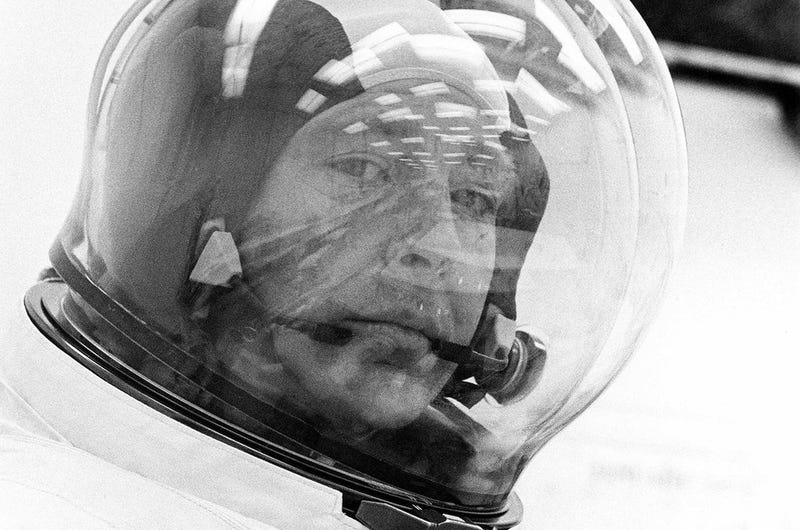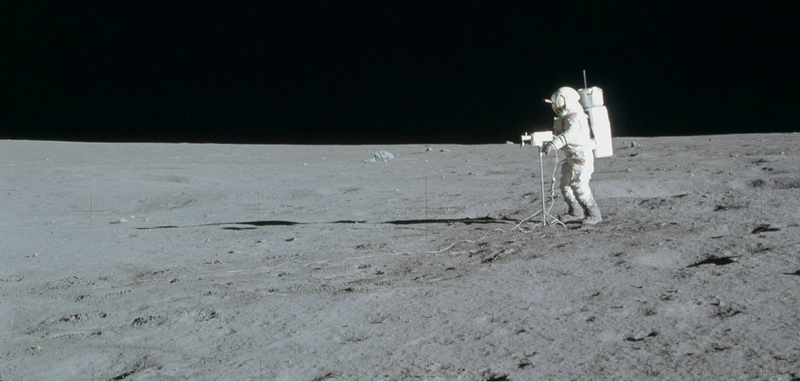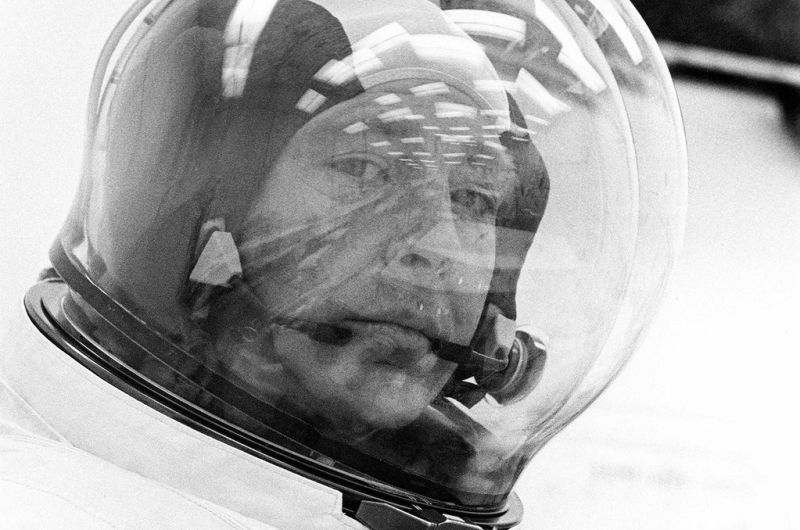
Apollo 14 astronaut Edgar Mitchell passed away on February 4th, on the eve of the 45th anniversary of his mission to the moon. He was 85 years old.
Mitchell was born on September 17th, 1930 in Hereford Texas, and later attended the Carnegie Institute of Technology, where he studied Industrial Management. Following his graduation in 1952, he joined the US Navy, where he became a pilot, flying A3 aircraft off of aircraft carriers USS Bon Homme Richard and USS Ticonderoga and later became a test pilot.
In 1957, the Soviet Union launched Sputnik into orbit, and Mitchell realized that that he wanted the same thing: to go into space:
Advertisement
I made the decision in 1957, when Sputnik went up. I was on a carrier in the Pacific, just about to come back to the States for some test pilot work, and when Sputnik went up I realized humans were going to be right behind it, so I started orienting my career toward that at that time.
That prompted him to go back to school, where he earned another degree in Aeronautical Engineering from the Navy’s Post Graduate School in 1961. from there, he attended MIT and earned his Doctorate of Science (ScD) in Aeronautics and Astronautics in 1964.
In 1966, NASA selected Mitchell to train as an astronaut as part of Astronaut Group 5. Amongst his classmates were Vance D. Brand (who later flew on the Apollo-Soyuz Test Project), Charles Duke (Apollo 16), Fred Haise Jr. (Apollo 13), James Irwin (Apollo 15), Kenneth Mattingly (Apollo 16), Bruce McCandless (Challenger and Discovery mission specialist), John Swigert (Apollo 13), and others.
Sponsored
Well, when we first came in, were first selected in our group, we had a choice—rather, we had the right to state a preference for what technical assignment would we like, and there were lists of technical assignments, concentrating on the lunar module, concentrating on the command module, concentrating on the ancillary equipment like suits and other equipment, and I don’t remember them all at this point. But I chose to request lunar module as being my prime technical assignment, and I got that assignment.
Following his training, Mitchell was designated as the backup Lunar Module Pilot for Apollo 10. He originally joined astronaut Alan Shepard Jr. (Commander) and Stuart A. Roosa (Command Module Pilot) for the crew of Apollo 13, only to have their mission bumped to Apollo 14 to give Shepard more time to train.
Apollo 14 launched on January 31st, 1971, and headed for the Fra Mauro highlands, the original destination for the aborted Apollo 13 mission. Shepard and Mitchell landed on the moon on February 5th, and Mitchell became the 6th person to walk on the lunar surface. There, they performed a pair of spacewalks: during the first, they deployed several scientific experiments and equipment, while on the second, they attempted to find the rim of the Cone Crater to collect samples. This walk was cut short when flight controllers became alarmed at how strenuous their EVA had become. Unbeknownst to them, they came within 20 meters of their target.
The mission was a major scientific success, however: while the astronauts set records for the EVA times, they brought back a 94 pounds of samples from the lunar surface, which were used in countless experiments back on Earth.
Despite their scientific work, Apollo 14 became more famous for other activities: Shepard brought along a golf club and a pair of balls to take a couple swings, while Mitchell threw a javelin (a lunar scoop handle).

The pair left from the lunar surface on February 6th, and returned home, splashing down three days later in the Pacific Ocean. Years after his return, Mitchell ruminated on his experiences for NASA’s Oral History project:
Yes. That’s a powerful experience, and to me, that was the culmination of my being, and what can I learn from this? What is it we are learning. That’s important, because I think what we’re trying to do is discover ourselves and our place in the cosmos, and we don’t know. We’re still looking for that. And that was a major effort. Even though we might have talked in technological and political terms and financial terms and how many billions of bucks are we spending, the real purpose is to find ourselves and our place in the larger scheme of things.
The spaceflight would be Mitchell’s only one: while he served as backup LMP for Apollo 16, he retired from NASA and the Navy in 1972. He became a proponent of paranormal phenomena and Unidentified Flying Objects, claiming to have an psychic experience on his ride back to Earth. He later founded the Institute of Noetic Sciences, and became a business consultant.
With Mitchell’s passing, the entirety of the Apollo 14 crew are now gone: Shepard died in 1998 from leukemia, while Roosa passed away in 1994 from pancreatitis. It also marks the first time that an entire lunar crew has passed away, and only seven of the moon walkers are still alive.
In a statement following Mitchell’s passing, NASA Administrator Charles Bolden noted:
“Edgar spoke poetically about seeing our home planet from the moon saying: ‘Suddenly, from behind the rim of the moon, in long, slow-motion moments of immense majesty, there emerges a sparkling blue and white jewel, a light, delicate sky-blue sphere laced with slowly swirling veils of white, rising gradually like a small pearl in a thick sea of black mystery. It takes more than a moment to fully realize this is Earth … home.’













